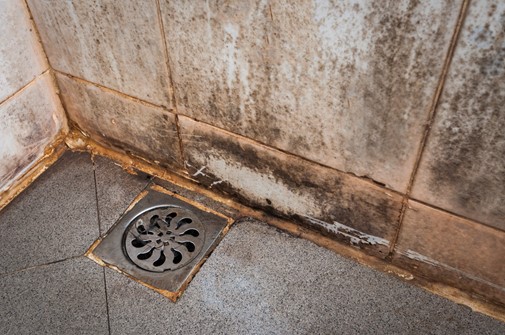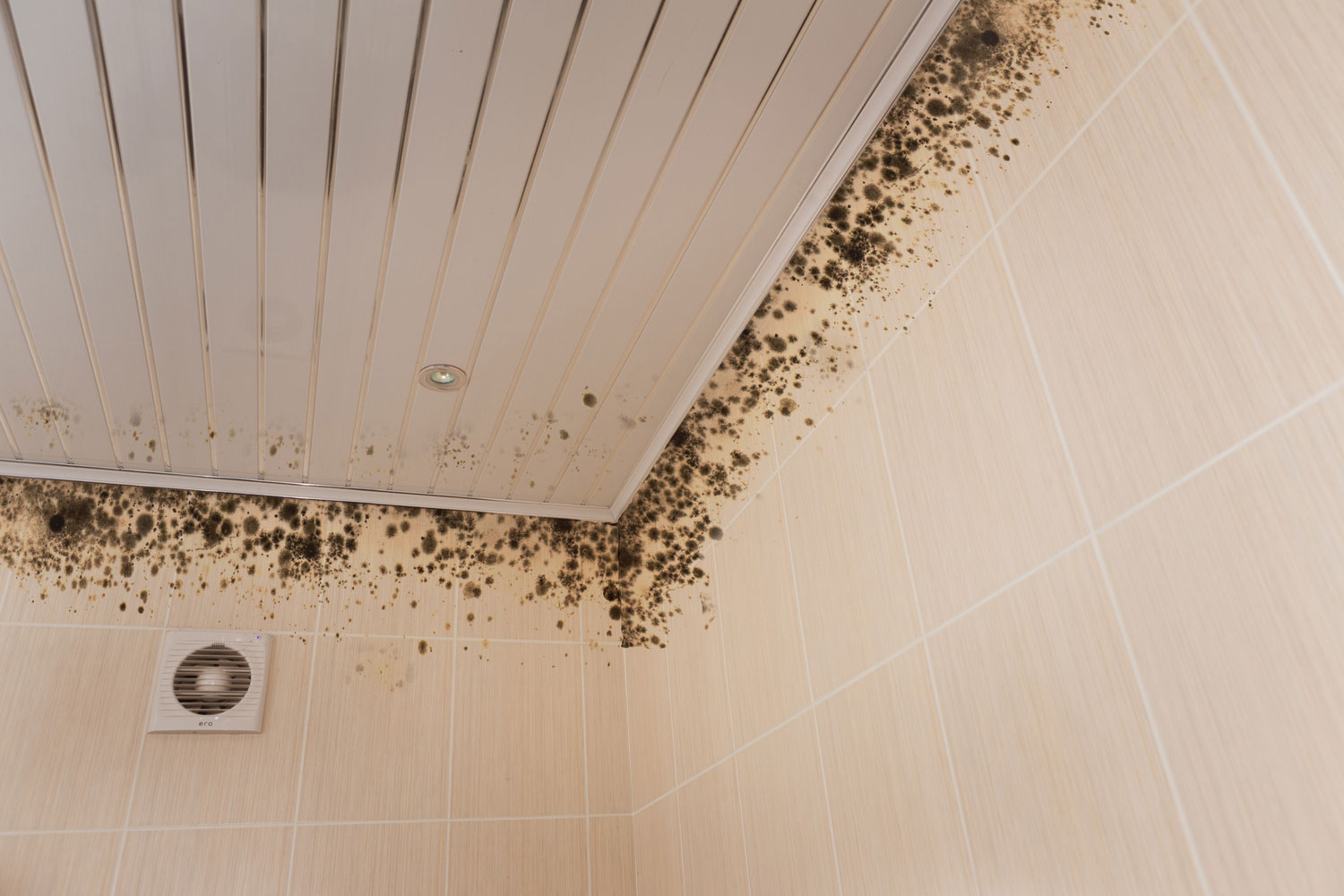Mold loves bathroom showers. If you discover mold in your bathroom shower it needs to be removed right away before it spreads somewhere else. Mold will thrive in your shower for three main reasons; there is lots of moisture and humidity, bathrooms and showers are generally darker than any other place in your home (except for maybe closets which don’t have the excess humidity), and there is little to no air movement (most people keep their shower curtains closed all the time).

Removing Mold From Showers Surrounds
If… and that’s a big word, the mold is growing only on the shower surround, and the shower surround is made of ceramic tile, fiberglass, or plastic, you can remove the mold using vinegar, baking soda, or a mold removal product like Concrobium Mold Control.
When using vinegar, it does not have to be diluted. Use it full strength, right out of the bottle and just spray it on the mold. Vinegar does come with a strong odor, so take that into consideration when using it.
For baking soda, mix a solution of one cup of baking soda with one gallon of water. Again spray it directly onto the mold. There is no need to rinse the baking soda solution off, as it will continue to prohibit the mold from returning.
When using a mold cleaner like the Concrobium, follow the label directions. It too doesn’t need to be rinsed away and will continue to provide protection from the mold returning.
If the situation is beyond “just a little cleaning”, it is time to turn to the pros. Once the mold has affected wallboards behind the shower surround and possibly is affecting the ceiling above the shower, the job of removal has become more intense. Shower tile may need to be removed along with any damaged wallboards and drywall. Drying of the studs and flooring should be done after removing any mold and the area should be treated with mold cleaning agents.
An Ounce of Prevention
What can you do to avoid mold growth to begin with?
Dry the shower – don’t walk away and leave your shower to dry on its own. You dry off with a towel, do the same for your shower.
Turn on the exhaust fan – That’s why they are installed in most bathrooms. If your bathroom doesn’t have an exhaust fan, have one put in.
Do a thorough shower cleaning once a week – you clean up more than once a week. It’s not asking too much to at least wipe down the shower once.
“We’ll leave the light on for you!” – bet you’ve heard that once or twice. Mold hates bright light or sunlight. One night a week leave a light on in your bathroom to discourage mold growth. What’s cheaper? A night’s electric bill for one light or a major mold remediation?
When mold has affected your shower, and walls a beginning to sag or ceramic tiles are coming loose, it’s time to ask for professional assistance. Water Mold Fire Restoration has IICRC-trained and certified mold remediation experts that can help you get rid of the mold. We respond 24/7 and can be at your home in one hour or less. Call us at 800-905-0277 or by email at help@watermoldfire.net.








